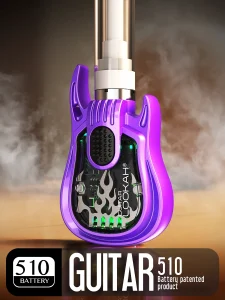Top 10 Gaming PC Cases for Optimal Performance and Style
Understanding Gaming PC Cases
What Makes a Gaming PC Case Unique?
A gaming pc case is designed with specific features that differentiate it from standard computer cases. The primary focus is not only to house the components but also to ensure optimal performance, cooling, and aesthetics tailored for gaming enthusiasts. Gaming PC cases often integrate advanced airflow systems, customizable RGB lighting, and support for larger hardware such as high-end graphics cards and extensive cooling solutions. These elements combine to enable a gaming setup that can handle demanding sessions, delivering seamless performance and visual splendor.
Key Features to Look For
When selecting a gaming PC case, specific features can significantly impact your overall gaming experience:
- Airflow: Essential for maintaining optimal temperatures, many gaming cases have mesh panels and strategically placed fans to facilitate airflow.
- Size Compatibility: It’s vital to choose a case that can accommodate your motherboard size, GPU length, and additional cooling systems.
- Cable Management: Good cable management features, such as Velcro straps and routing holes, can improve aesthetics and airflow.
- Cooling Options: Some cases support liquid cooling systems and extra fan slots, providing flexibility for thermal management.
- Ports and Connectivity: Front-panel USB ports (including USB-C) and audio jacks offer convenience for gamers.
Popular Gaming PC Case Materials
The materials used in constructing gaming PC cases play a crucial role in durability, weight, and aesthetics:
- Steel: Known for its strength, steel cases offer robust protection but can be heavier than alternatives.
- Aluminum: Lightweight and aesthetically pleasing, aluminum cases often feature better finishes but can be more expensive.
- Tempered Glass: Used for side panels, tempered glass cases showcase internal components and lighting, making them visually appealing.
- Plastic: Commonly used in budget cases, plastic is lightweight but less durable than metal alternatives.
Top Brands in Gaming PC Cases
Corsair: Design and Functionality
Corsair is a brand synonymous with high-quality gaming peripherals and cases. Their designs often feature sleek aesthetics, modular features for easy upgrades, and superior cooling capabilities. Popular models like the Corsair 4000D Airflow incorporate optimal cooling designs with a focus on performance and ease of build. The company’s commitment to RGB integration allows users to customize their setup further, aligning with modern gaming aesthetics.
NZXT: Stylish and Efficient
NZXT has established a reputation for producing visually striking and functional gaming cases. Models such as the NZXT H510 series offer a minimalist design coupled with efficient airflow. These cases are equipped with features like cable management channels and tempered glass side panels, providing a structured and elegant appearance. Additionally, NZXT’s CAM software allows users to control RGB lighting and fan speeds, enhancing both performance and visual appeal.
Thermaltake: Best Cooling Solutions
Thermaltake is renowned for its innovative cooling solutions, with many cases designed specifically for optimal thermal management. Their cases often include multiple pre-installed fans and support for liquid cooling systems. The Thermaltake View series exemplifies this focus, combining aesthetics with functionality, featuring ample space for components while ensuring efficient airflow.
Choosing the Right Size for Your Build
ATX vs. Micro-ATX: What’s Best?
The choice between an ATX and Micro-ATX case largely depends on the intended build and available space. ATX cases provide more room for expansion, ideal for high-performance gaming rigs, while Micro-ATX cases are compact, making them suitable for smaller setups or budget builds. Understanding your components and future upgrade plans can guide you in making the best selection for your gaming needs.
How to Calculate Space Requirements
Calculating the necessary space for your gaming PC involves accounting for numerous factors, such as motherboard dimensions, GPU length, cooling solutions, and additional storage devices. Measure the dimensions of your components and compare them to the specifications of potential cases. It is recommended to leave some extra room for good airflow and future upgrades.
Modularity and Expansion Options
Modularity in gaming PC cases allows users to customize their configurations easily. Features like removable hard drive cages, adjustable drive bays, and customizable fan placements enable users to adapt their cases to meet changing needs. An ideal gaming case should offer sufficient expansion capabilities to accommodate future upgrades without needing to replace the entire system.
Tips for Customizing Your Gaming PC Case
Adding RGB Lighting for Aesthetic Appeal
RGB lighting can bring your gaming rig to life, creating a captivating and immersive atmosphere. Many gaming PC cases include built-in RGB lighting or support for RGB fans. Users can synchronize lighting effects through software, allowing colors and animations to match the gameplay experience. There are also aftermarket RGB strips that can be added to cases for further customization.
Optimizing Airflow: Fans and Ventilation
Effective airflow is vital for maintaining the longevity and performance of gaming components. Users should strategically position intake and exhaust fans for balanced airflow. It is best to follow the principle of front-to-back airflow and bottom-to-top airflow, ensuring that cool air enters the case while warm air exits efficiently. Upgrading to higher-quality fans can also provide quieter operation with better cooling performance.
Custom Paint Jobs and Modifications
For gamers looking to personalize their build even further, custom paint jobs and modifications can set their cases apart. Users can choose innovative designs and colors that reflect personal style. However, it’s essential to ensure that modifications do not obstruct airflow or negatively impact the structural integrity of the case. Many online communities offer tutorials on safe ways to modify your case while sharing unique design inspirations.
Maintaining Your Gaming PC Case
Regular Cleaning Practices
Keeping your gaming PC case clean is crucial for performance and aesthetic upkeep. Dust and debris can accumulate over time, obstructing airflow and causing overheating. Regularly use compressed air to blow out dust from fans and vents. It’s advisable to clean your case every few months, depending on your environment, and to maintain a specific schedule to keep your hardware running efficiently.
Monitoring Temperature and Performance
Another essential aspect of maintenance is monitoring the temperatures of your components. High temperatures can lead to thermal throttling or hardware damage. Utilize software tools to monitor your temperature readings in real time. If temperatures exceed the recommended limits, consider enhancing cooling solutions or re-evaluating the positioning of your case to improve ventilation.
Upgrading Components: When and How
Keeping your gaming PC case updated with the latest hardware can profoundly affect performance. Knowing when to upgrade components is essential; typically, upgrades should be considered when software demands exceed current capabilities or when experiencing performance bottlenecks in gaming. Always ensure compatibility with your existing case and power supply, and consult your case specifications for guidance on component size limitations.














Post Comment